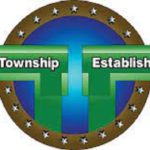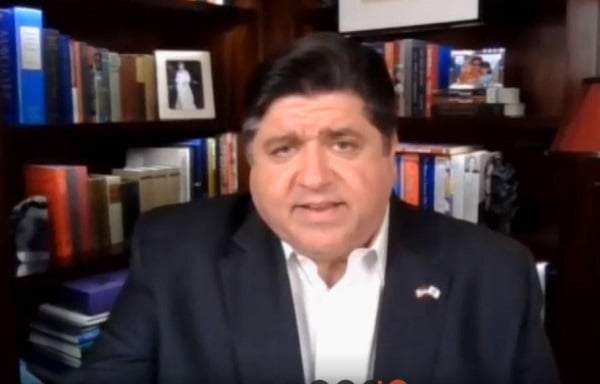Illinois (ECWd) –
During the last Legislative session, numerous new laws were pushed through with little or no time to evaluate them for even the most basic of problems. Throughout the Illinois School Code, there have been amendments and new laws passed and signed into law as a result of the COVID-19 pandemic.
One in particular deals with Remote and Blended Remote learning.
(105 ILCS 5/10-30)
Sec. 10-30. Remote and blended remote learning. This Section applies if the Governor has declared a disaster due to a public health emergency pursuant to Section 7 of the Illinois Emergency Management Agency Act.
The primary legal challenge these new school code laws are going to face is the definition of a “Public Health Emergency” pursuant to Section 7 of the IEMAA. The law clearly provides a statutory definition to the term “Public Health Emergency” and at a minimum, every county with zero deaths does not have a “Public Health Emergency”. We covered, in great length, the statutory definition of Public Health Emergency in this article. We urge everyone to read it, three times.
Sec. 4. Definitions. As used in this Act, unless the context clearly indicates otherwise, the following words and terms have the meanings ascribed to them in this Section
“Public health emergency” means an occurrence or imminent threat of an illness or health condition that:
(a) is believed to be caused by any of the following:
(i) bioterrorism;
(ii) the appearance of a novel or previously controlled or eradicated infectious agent or biological toxin;
(iii) a natural disaster;
(iv) a chemical attack or accidental release; or
(v) a nuclear attack or accident; and
(b) poses a high probability of any of the following harms:
(i) a large number of deaths in the affected population;
(ii) a large number of serious or long-term disabilities in the affected population;
(iii) widespread exposure to an infectious or toxic agent that poses a significant risk of substantial future harm to a large number of people in the affected population.
In order for the Governor to be able to declare a disaster due to a public health emergency, there must be a public health emergency as defined. Note that when a portion of the state has a flood, the disaster declarations are applied to the area that is affected by the flood, not the whole state. An example of such a targeted declaration is found in the Governor’s recent EO for Bureau County flooding from a thunderstorm. Note the specific targeting language:
Section 1. Pursuant to the provisions of Section 7 of the Illinois Emergency Management Agency Act, 20 ILCS 3305/7, I find that a disaster exists within the State of Illinois and specifically
declare Bureau County as a disaster area.
Note the difference in the EO related to COVID-19
WHEREAS, I, JB Pritzker, Governor of Illinois, declared all counties in the State of Illinois as a disaster area on March 9, 2020; and, (EO 2020-03)
The Governor has insisted that he is following the advice of the experts and the science as it relates to COVID-19 yet his first EO had nothing to do with Public Health but rather protecting the interest of the marijuana industry, which he has family ties to. (article here)
The first EO that had anything to do with COVID failed to even follow the advice of the recognized experts as he claims he is doing.
WHEREAS, in communities with confirmed COVID-19 cases, the CDC currently recommends mitigation measures, including practicing social distancing, staying at home when sick, staying home when a household member is sick with respiratory disease symptoms or when instructed to do so by public health officials or a health care provider, and keeping away from others who are sick; and, (EO 2020-04)
At the time of the EO, few counties had any confirmed COVID-19 cases, yet he implemented a once size fits all policy. While we understand the intent, we don’t understand how he can claim he follows the advice of the experts, who he confirmed recommended a targeted approach. Additionally, the definition of a public health emergency has been ignored.
Many parts of the state, and arguably the vast majority of the state does not have a public health emergency as defined in the law. The proclamations the Governor has issued fail to conform to the long-standing practice of such proclamations for other disasters in that they are not targeted to the affected area. When such a broad brush is used rather than a targeted approach for the affected area, it seems clear the Governor has exercised power never granted nor intended by the legislature.
We view this entire mess as being typical Illinois Government. Schools will say the Governor declared a disaster so we can do remote and blended remote learning while never giving thought to the legality of the actual declaration. We see public officials all the time use the same illogical thought process. A board commonly passes a policy and they think since they voted for it then it’s binding. A simple review of the Attorney General PAC rulings will expose hundreds of rulings where such adopted policies or agenda items are not legal under the law.
We believe the courts will do much the same with the Governor’s lawsuits against schools who dare question his declarations.
For those that did not take the time to read the article detailing the legislative definition of Public Health Emergency, once again we urge you to do so. (article here)








4 Comments
Kathy
Posted at 09:53h, 24 JulyGreat post. Thanks for your hard work , Watchdogs.
PK
Posted at 22:27h, 21 JulyTargeted, not all 102 counties.
EO 2020-03 is nearest the Governor’s dubbing a shipment of surgical masks as the “wrong kind.”
“Surgical masks,” precision tacit.
PeteJohlie
Posted at 22:42h, 21 JulyI don’t understand your comment. Can you explain?
PK
Posted at 15:13h, 22 JulyThe state’s business etiquette is replete with the Governor’s EO 2020-03, other IEMAA EO’s related to COVID-19, and the re-opening plan ‘for’ keeping the many non-essential other businesses restricted, as it were then, 30 days at a time.
The IL re-opening ‘plan’ encouraged certain travel across Illinois borders. Take the nearest IL cannibis dispensary, or, among other interests, barbershops open just across the border. How long was cannibis tax revenue secured at the expense of IL licensed barbers? Other ‘non-essential’ businesses restricted along borders WI-IL, IA-IL, MO-IL, IN-IL, and KY-IL were/are considerable too. Does the COVID-19 data yet support the Illinois state government’s choice for not targeting similar county’s school districts?
Five tri-state areas are uniquely situated by EO 2020-03 and IL state borders. In these jurisdictions, how many IL counties where COVID-19 is/was reasonably unsuccessful were viewed as an opportunity in the Governor’s re-opening ‘plan’? Know that none were selected.
In March, the state requested assistance with supply of PPE. At that time, N95 or KN95 masks were perceived best in class for purpose of preventing the novel corona virus from “community spread.” The state promptly received a shipment of surgical masks.
With minimal bias, I received the state’s critique of the PPE shipment as being Politically Incorrect. The whole of it then also seemed lavish to outweigh a very realistic potential for regional differences to remain in any eventuality; that being a persistence of COVID-19 severity, with less severe always holding to better. Several counties were still reporting none at the time. Many others had few.
Finally, I realize this may be too lengthy PETEJOHLIE. However, shortly before the PI statement, the Governor had issued EO 2020-03. Having since been monotonized, and somewhat like others not strictly opposed to the Cannibis Tax Act, I probably would not otherwise question again:
Upon the March 2020 emergency declaration, what precisely did EO 2020-03 intend to accomplish, and for whom?